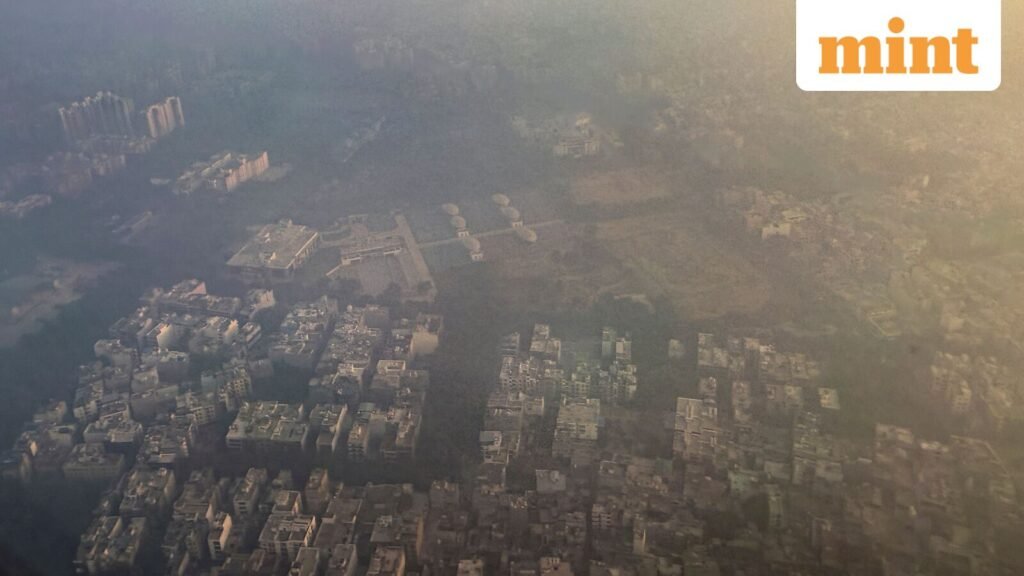Delhi and NCR remained toxic for its residents on Monday as a thick blanket of smog covered the national capital, with Delhi AQI slipping to the ‘very poor’ category on Thursday evening.
While Delhi Air Quality Index (AQI) had improved slightly over the past two days and was recorded at 278 on Thursday morning, the pollution levels dipped to the ‘very poor’ category by the evening thus taking Delhi to the red zone again.
The 24-hour average Air Quality Index (AQI), reported at 4 pm every day, stood at 311, as per the Central Pollution Control Board (CPCB).
As per the CPCB’s Sameer App, 32 out of the 38 AQI monitoring stations in Delhi showed readings above 300, falling under the ‘very poor’ category.
In the morning, a layer of smog settled over various parts of the city. Kartavya Path experienced lingering smog in the air, while ITO also reported persistent smog. Additionally, a dense layer of smog was observed in the Dhaula Kuan area of the national capital.
On Wednesday, Delhi AQI had seen some improvement with an overall air quality of 202 falling under the ‘poor’ category, as favourable wind conditions helped disperse pollutants.
Delhi AQI was 291 on Tuesday and 309 on Monday, the CPCB data showed.
Centre predicts more toxic days in Delhi
Delhi AQI will continue to remain in the ‘very poor’ category for the next six days, according to Centre’s data, meaning that there will be no respite for residents in the near future.
The met department’s forecast for November 6 predicted slower winds in Delhi — reaching up to 15 kmph from the northwest direction in the afternoon, and then slowing down to below 10 kmph during evening and night.
Meanwhile, the Decision Support System (DSS) for air quality forecasting estimated that stubble burning accounted for 21.5% for Delhi’s PM2.5 levels on Thursday. It is expected to rise to 36.9% on Friday and 32.4% on Saturday, as compared t just 1.2% on Wednesday.
After stubble burning, transport was projected to be the second-highest contributor, accounting for 16.2% on Thursday, 11.2% on Friday, and 12.3% on Saturday.
Delhi’s air crisis
Since Diwali, the national capital’s air quality has fluctuated between the ‘poor’ and ‘very poor’ categories, occasionally slipping into the ‘severe’ zone.
Amid rising chatter of the amount of toxic air Delhi is breathing and the severe implications of the same, doctors have sounded warnings about the alarming number of illnesses that have increased due to the pollution.
Many people are currently suffering from various respiratory conditions, including throat irritation, rhinitis, a runny nose, itchy eyes, and severe chest congestion, flooding OPDs at hospitals, doctors have said.
Some individuals have also experienced exacerbation of symptoms related to asthma, chronic obstructive pulmonary disease (COPD), interstitial lung disease (ILD), and other chronic lung or heart diseases.
As per the AQI categorisation, a reading between 0-50 is considered ‘good’, 51-100 ‘satisfactory’, 101-200 ‘moderate’, 201-300 ‘poor’, 301-400 ‘very poor’, and 401-500 ‘severe’.




